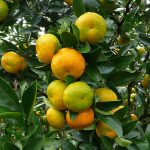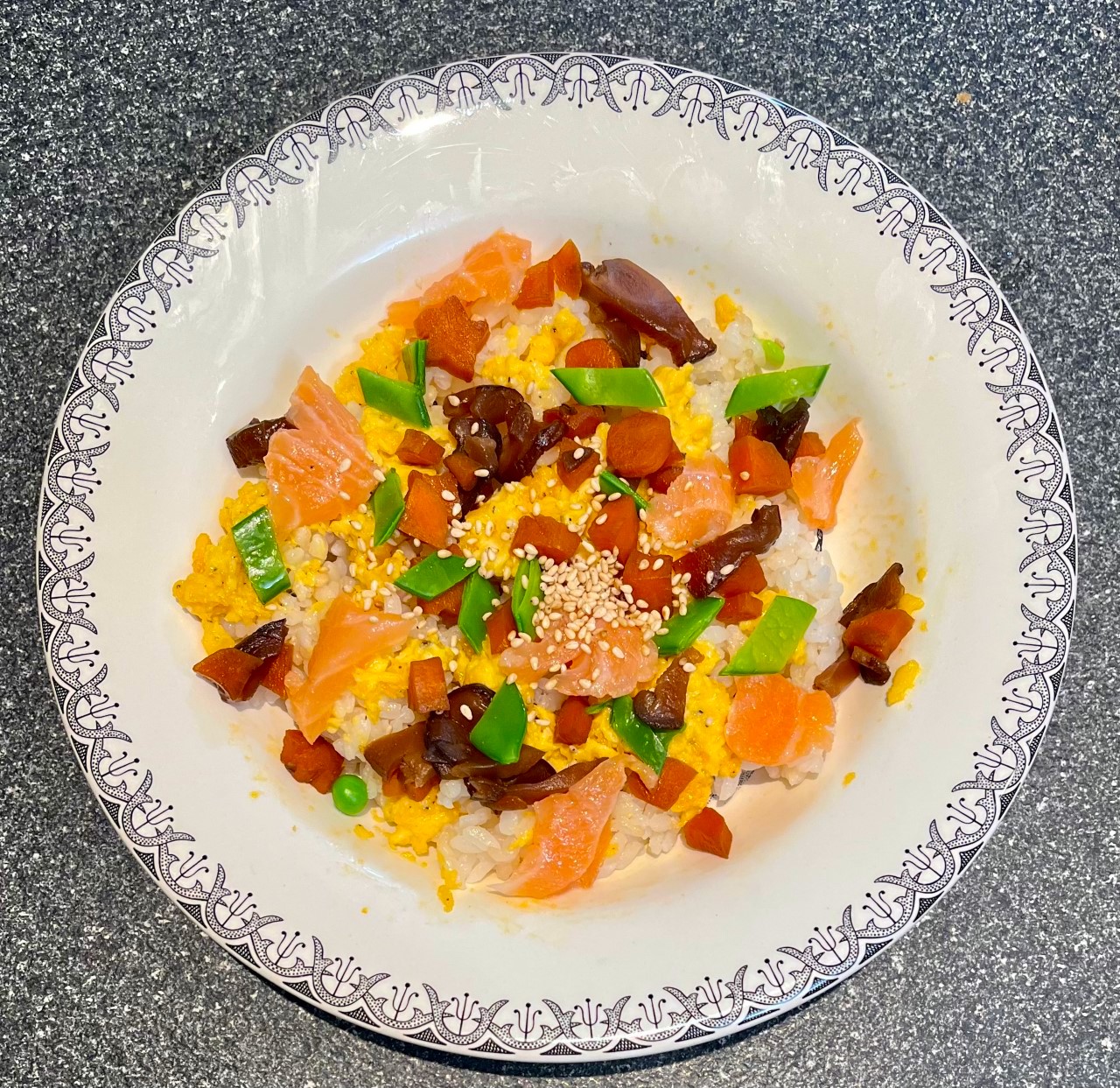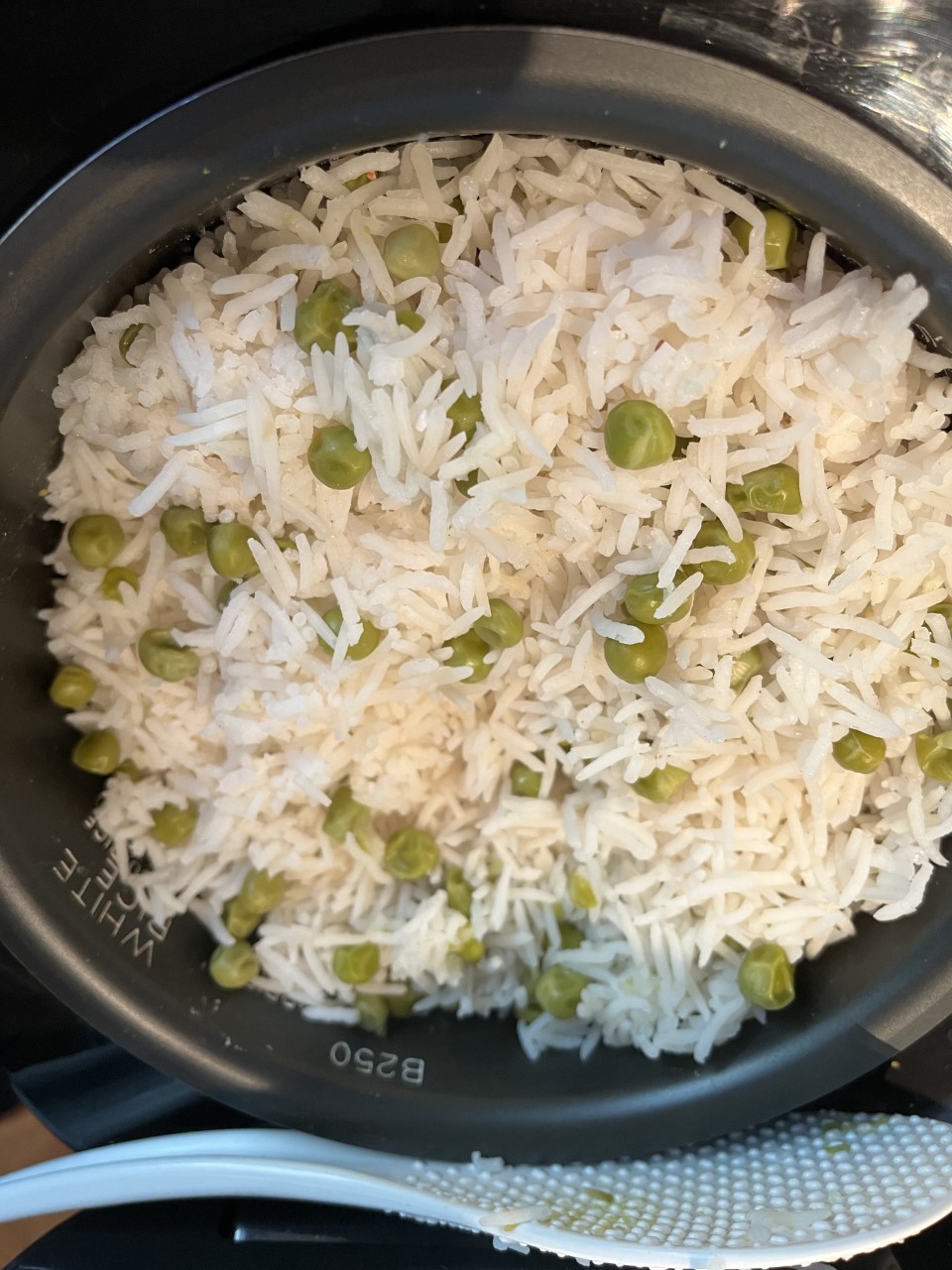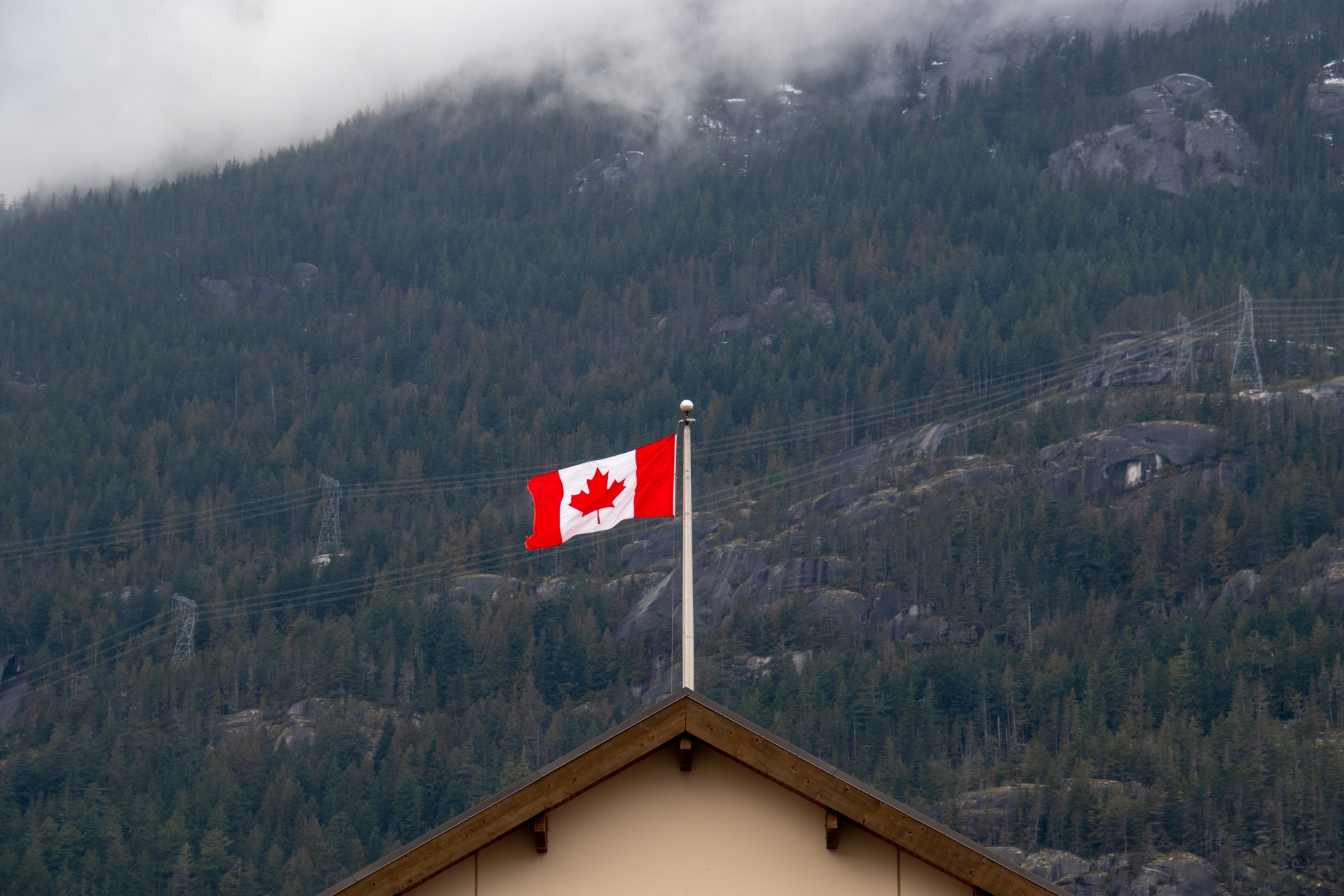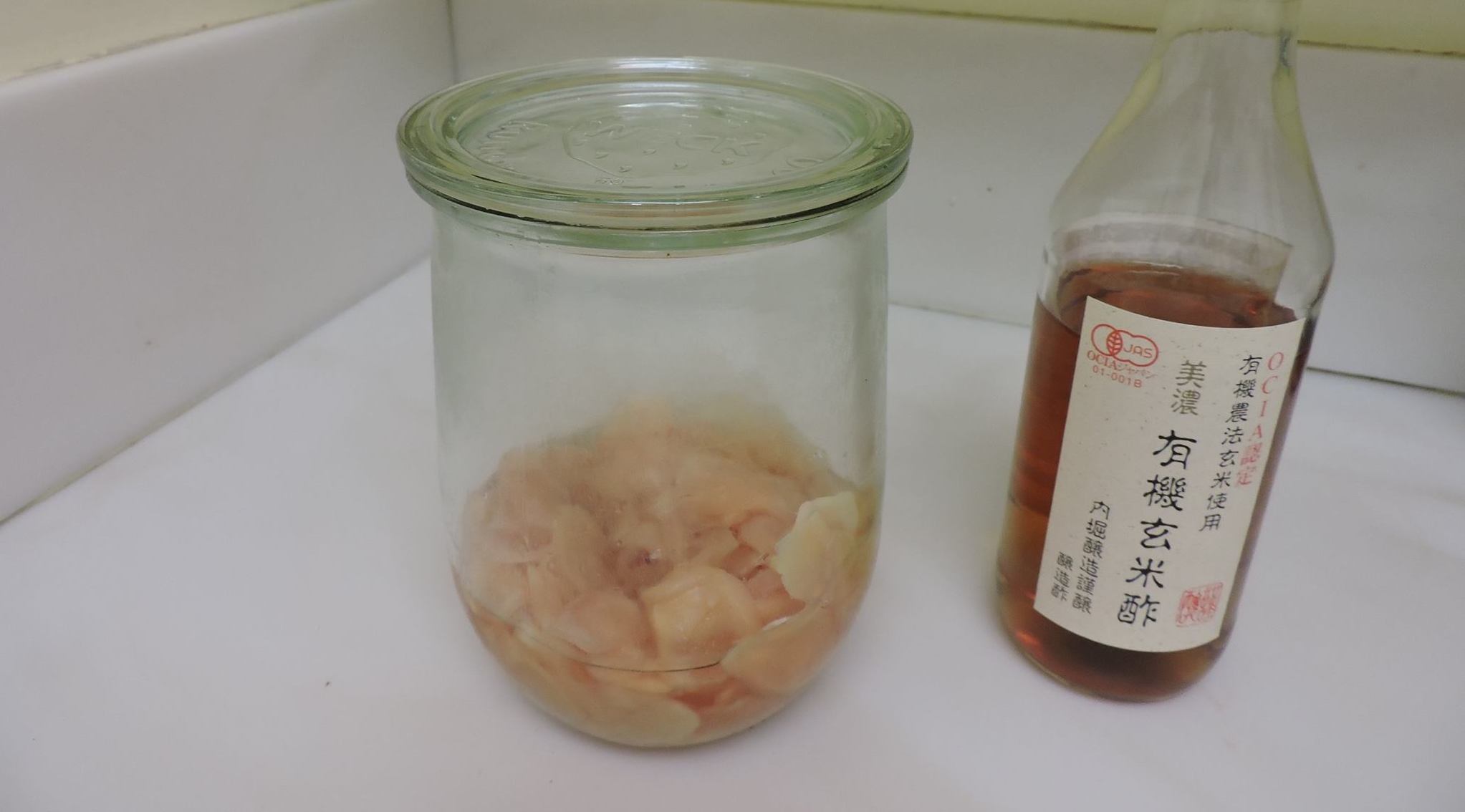ルビつき和訳は英文の下にございます。/ The Japanese translation with Ruby is below the English text.
WHAT IS SATSUMA MANDARIN?
Contents 1. Satsuma mandarin is Citrus unshiu 2. The mandarin family 3. “Kishuu Mikan” (Citrus kishu) 4. The ancestor tree 5. Citrus unshiu, a seedless variety 6. Names for Citrus unshiu Japanese translation References
1. Satsuma mandarin is Citrus Unshiu
In early December, a neighbor gave us a bag of beautiful mandarin oranges from their yard.
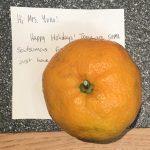
There was a note left on the bag: “These are satsumas from our yard.” They looked very much like the mandarins we eat in Japan.
“Satsuma” is a name of a place on Kyushu Island, Japan. It is an area of mild climate and people grow mandarins there, but it was our first time to hear it as a variety name.
When we lived in Flushing, a Chinatown in New York City, a lot of mandarins were sold at supermarkets. However, they were labeled as “mandarin”, “clementine”, or ”tangerine”, and we had never seen “satsuma”.
How are they different?
We found that “satsumas” were the same mandarins as we commonly eat in Japan now. We call them “Unshuu mikan” or just “mikan” in Japanese, and its scientific name is “Citrus unshiu”.
2. The mandarin family
“Mandarin” is the Western word for the category of small oranges, which are sometimes a little flat in shape. Its bright orange color resembled, and therefore was strongly associated with the color of the clothes that Ching Dynasty (1644-1912) officials wore. Westerners called those officials and the Chinese citruses mandarins.
Mandarins are smaller than oranges and the skin is tenderer. It is easier to peel them by hand, and you can separate the inner segments easily.
Citrus unshiu, a.k.a. “satsuma” mandarin, is a variety in the mandarin family. According to the website of University of Florida, there are over one hundred cultivars of Citrus Unshu.
As to the differences among its cousins, a citrus orchard in Louisiana explains thus: “Satsuma” mandarin is sweet but has some acidity, and the taste is lighter. They have no pips. The tender skin makes it easy to peel but at the same time is susceptible to bruises, thereby making it harder to be sold commonly at supermarkets.
A clementine is smaller and sweeter than a “satsuma” mandarin, but it is not as easy to peel as “satsuma”. Also, a tangerine is bigger, sweeter and more flavorful, but harder to peel than “satsuma”.
3. Kishuu Mikan (Citrus kinokuni)
There are citruses indigenous to Japan, but the mandarin came to Japan from China.
The first mandarin variety which became prevalent in Japan was the one called “Kishuu mikan (mandarin from Kishu)” or “ko-mikan (small mandarin)“. Its scientific name is Citrus kinokuni.
Kishuu or Kinokuni means the area of present-day Wakayama Prefecture. This area has been famous for its rigorous breeding and cultivation of mandarins since the 16th Century.
Citrus kinokuni is about a quarter-size of Citrus unshiu. It has a pip in every segment and so they are not popular today.
…Except for some Citrus kinokuni, as explained in the next chapter, which they are valued very highly.
4. The Ancestral Tree
For example, there is the fruit of “Ozaki Ko-Mikan Ancestral Tree”. It is Japan’s oldest living tree of Citrus kinokuni in Tsukumi City, Oita Prefecture.
This tree was planted here in 1157, and has been knocked over many times by strong winds and typhoons. As a result, the original trunk is dead.
However, when the tree branches were bent and forced to stay on the ground, some branches began to take roots. They gradually grew into small trees, and now there are eleven small trees around the original trunk forming a small grove. They cover an expanse of 4,800 square feet (446 square meters), and recently produced 617 pounds (280 kilograms) of fruit.
What a vitality! People would love to share some of it.
The fruit of this tree is branded as “Eight Hundred Years Old” and sold at fancy fruit stores.
One of them, Ginza Senbikiya of Tokyo, announced on Facebook about the delivery of “Eight Hundred Years Old” with the following comment:
Since the days of old, this fruit has been very highly regarded at auspicious occasions as the one to bring good luck, rather than for its taste.
By any chance, if we have one, we would like to remove the seeds first and sow them first.
5. Citrus unshiu, a seedless variety
On the other hand, Citrus unshiu, a.k.a. “satsuma”, has also been eaten for five to seven hundred years.
Citrus unshiu is a variety which was mutated from Citrus kinokuni in Nagashima, in present-day Izumi County, Kagoshima Prefecture. A DNA test identified its parent seed as Citrus kinokuni, and its pollen parent as Kunenbo (its scientific name Citrus nobilis) in 2016.
Click this link: The location of Nagashima
However, until mid-19th Century Citrus unshiu was never cultivated nationwide.
Why not?
Because the fruit had no pips.
The seed is a metaphor of a child or posterity. In the feudal days, it was of utmost importance to make a lot of children and make the family prosper. Particularly in the warrior class, if a family had no male heir, the government would order the extinction of the family line. Therefore seedless mandarins were considered to be a symbol of bad luck.
6. Names for Citrus unshiu
Up until the Edo Era, Citrus unshiu had various names. So the Meiji Government standardized the name as “Unshuu mikan” for statistical purpose.
“Unshuu” is an old place name in China which produced the best mandarins according to a Chinese document from the 12th century. The Japanese wanted to share the good reputation by borrowing the place name.
One of Citrus unshiu’s older, popular names was “Riurin” or “Rihujin”. It’s written 李夫人, meaning something like Madame Li. Some say it’s the name of a woman of an unmatched beauty that Emperor Wu of Han loved. But it’s a little difficult to feel the connection between the lady and the fruit.
The name “Rihujin” has another possible origin. According to this theory, a word game is behind the name. Citrus Unshu was much bigger than the popular Citrus kishu, and yet it had no pips. It was unreasonable! The Japanese word for “unreasonable, inexplicable or irrational” is also “rihujin”, but is spelled “理不尽”. However, they applied different Chinese characters to the sound to make it look nice and poetic.
In the Edo Era, people often played with words and gave humorous names to things, so we think it is possible.
After the last part of Edo Era, more people began to growd Citrus unshiu in Japan, and in mid-Meiji Era the number of produced Citrus unshiu surpassed that of Citrus kinokuni. There were still people who would prefer to have Citrus kinokuni with pips for the New Year and other celebratory occasions, but more and more people wanted mandarins easier to eat.
* * *
During this period of end-of-Edo-Era to beginning-of-Meiji-Era, Citrus unshiu spread abroad.
From the next posts, we will tell you how Citrus unshiu came to the United States, the United Kingdom and Canada, and why it began to be called “satsuma” mandarin in the US and the UK.
[End of the English post]
「サツマ」みかんとは何か
**************************************************
目次
- 「サツマ」は日本の温州みかん
- みかんの仲間
- 紀州みかん
- ご先祖の木
- 温州みかんは種がない
- みかんの呼び名
**************************************************
1.「サツマ」は日本の温州みかん
12月の初め、ご近所の方に、お宅で穫れたきれいなみかんをいただきました。
いただいた袋に「うちの庭のサツマです」というメモがついていました。日本のみかんとよく似ています。
「サツマ」は九州の地名です。みかんができる温暖な地方ではあるけれど、品種の名前とは知らなかったので、面白く思いました。
昔、フラッシング (ニューヨークの中華街) に住んでいた時は、スーパーにみかんがたくさん売っていました。でも名前はマンダリンかクレメンタインかタンジェリンで、日本のみかんや「サツマ」を見た覚えがありません。
これらのみかんは、どう違うのか?
調べてみたら、「サツマ」は今の日本の普通のみかん、「温州みかん」のことでした。学名Citrus unshiu。
2.みかんの仲間
みかん(ちょっと平たい形をしていることもある、小さい柑橘)を総称して西洋で「マンダリン」といいます。鮮やかなオレンジ色が、中国清朝(1644~1912)の官吏(マンダリン)の服と同じ色だったので、こう呼ばれるようになりました。
マンダリンは、オレンジより小さく、皮が柔らかく、手で剥けて、中は房に分けやすい。
「サツマ」こと温州みかんはこのマンダリンの一品種ですが、フロリダ大学のサイトによると温州みかんの中にさらに100品種はあるそうです。
ある園芸サイトには、「サツマ」は甘いけれど酸味もあり、味はさっぱりしている。種がない。皮が柔らかくとてもむきやすい反面、傷つきやすいので、スーパーマーケットに出ることは比較的少ないと書いてありました。
「クレメンタイン」は「サツマ」より小さく、より甘いけれど、サツマほどむきやすくない。
また、「タンジェリン」は、「サツマ」より大きくて、甘みも凝縮されているけれど、むきにくいとか。
3.紀州みかん
日本原生の柑橘類も存在しますが、みかん自体は中国からきたものです。
日本で最初に広まったみかんは、「紀州みかん」または「小みかん」と呼ばれる品種でした。学名はCitrus kinokuniです。
紀州、キノクニはどちらも現在の和歌山県地方のことです。16世紀からみかんの栽培と品種改良に取り組み、みかんの産地として有名です。
紀州みかんは温州みかんより小ぶりで、ひと房ごとに種があります。そのため、現代ではあまり人気がありません。
ただし、次に述べるように、とても大切にされている紀州みかんもあります。
4.ご先祖の木
例えば、大分県津久見市は日本最年長の紀州みかんの木、「尾崎コミカン先祖木」になるみかん。
この木は1157年にこの場所に移植されましたが、これまで何度も大風などで倒れ、元の幹は枯れました。しかし、枝が地に着いたところから根が出て、そこから小さな木が育ち、今では元の幹の周りに11株が小さな森のように茂っています。その広がりは446平方メートル (4,800平方フィート) に及び、280キロ (617ポンド) に上るみかんが穫れるとのこと。
あやかりたくなるような、すごい生命力です。
この木のみかんは「樹齢800年みかん」という名で、高級果物店で売っています。
古くから味よりも縁起物として新年のおめでたい日に珍重されてまいりました。
フェースブック、銀座千疋屋
と、「銀座千疋屋」のフェースブックで紹介されていました。
万一手に入ったら、まずは種を取っておいて、植えてみたいものです。
5.温州みかんは種がない
一方、「サツマ」こと温州みかんも、500~700年ほど前から食べられていました。
温州みかんは、現在の鹿児島県出水郡長島で紀州みかんが変異して発生した品種です。2016年のDNA鑑定によると、種子親が紀州みかん、花粉親がくねんぼだったそうです。
しかし、19世紀中頃までは温州みかんが全国的に栽培されることはありませんでした。
なぜでしょうか。
それは、種がなかったからです。
種は「子供」の隠喩です。封建時代は、子ををたくさん作って家を繁栄させることが重要でした。ことに武士階級では男子が生まれなければお家断絶です。そこで、種なしみかんは縁起が悪いものだったのです。
6.みかんの呼び名
「温州みかん」という呼称は、統計のため明治時代に全国的に統一されたものです。
「温州」とは中国の地名ですが、12世紀の中国のある文書で温州がみかんの最高の産地とされていたので、それにあやかろうとしたものだそうです。
それ以前は、このみかんは他の名でも呼ばれていました。
そのひとつに「李夫人」があります。読み方は、「りうりん」「りふじん」。漢の武帝が愛した絶世の美女の名とする説がありますが、なぜその名を採ったのか、わかりにくい。
一説では、このみかんは「大きくて甘いのに種がない。理解に苦しむ」ので「理不尽」です。その音「りふじん」にわざとロマンチックな漢字「李夫人」を当てた、といいます。
江戸時代にはこのようなユーモラスな言葉遊びが盛んに行われていたので、あり得ないことではありません。
江戸時代末期以後は、この温州みかんの栽培が少しずつ盛んになり、明治時代半ばぐらいからは紀州みかんと地位が逆転しました。新年やおめでたい席では、やはり種のある紀州みかんを喜ぶ人がいたけれど、まずは食べやすい方がいいという考えの人々が増えたのでしょう。
* * *
江戸時代末期から明治時代に入ると、温州みかんは、外国に導入されました。
次回からは、この時期、すなわち1860年代~80年代に米国、英国、カナダに入った時などの面白い話をご紹介したいと思います。
[和文部終わり]
References
- The Satsuma Mandarin, University of Florida Extension, https://edis.ifas.ufl.edu/publication/CH116
- ウンシュウミカン, https://ja.wikipedia.org/wiki/ウンシュウミカン
- 観音山フルーツガーデン
- 津久見市の文化財 尾崎小ミカン先祖木
- 津久見市Wikipedia
- Parental diagnosis of satsuma mandarin
- 明治期日本における温州蜜柑の普及と紀州蜜柑からの嗜好変化
